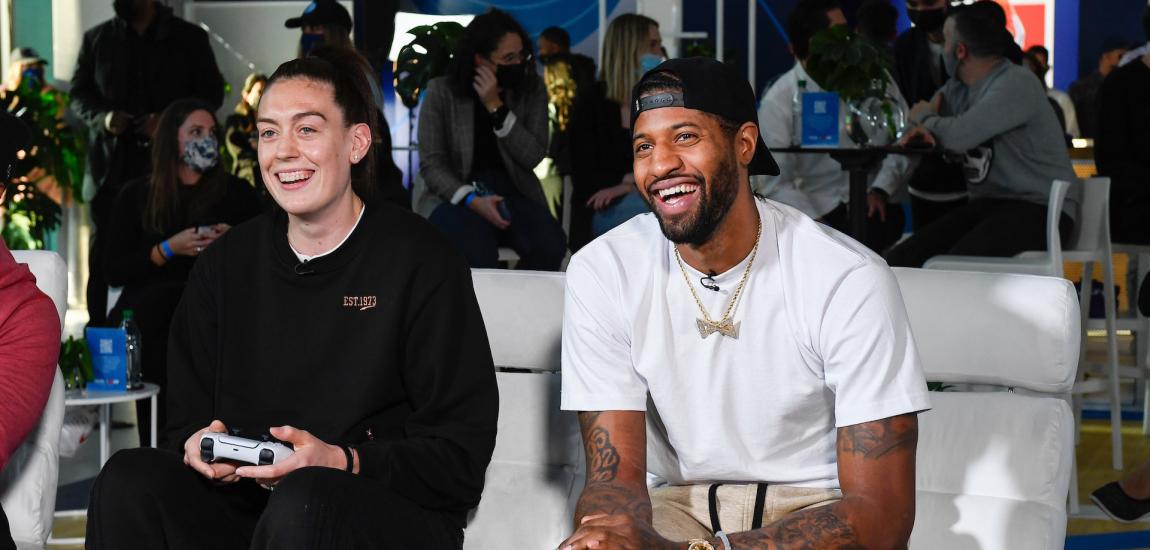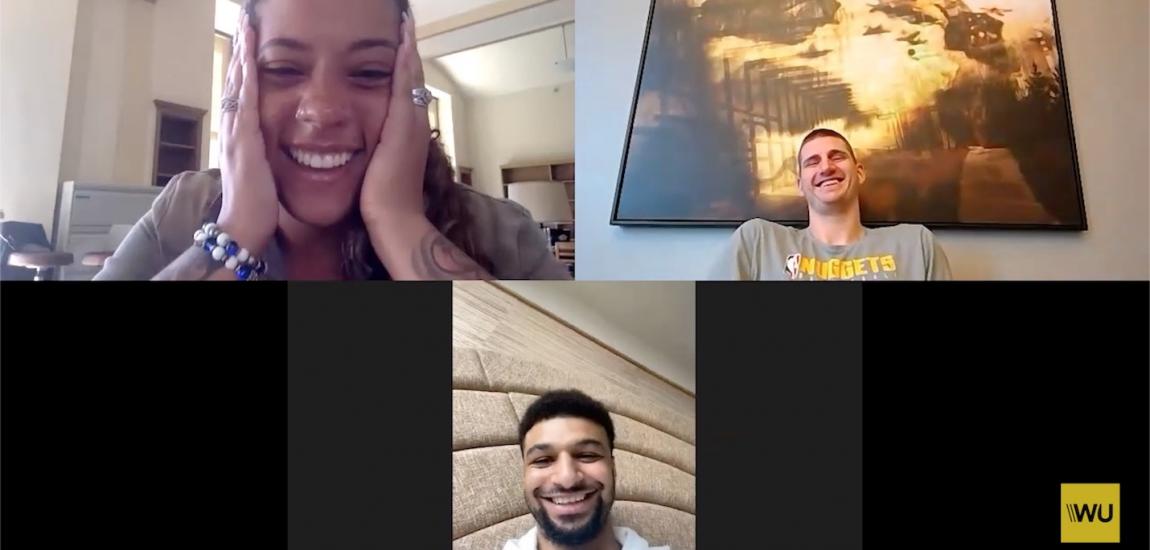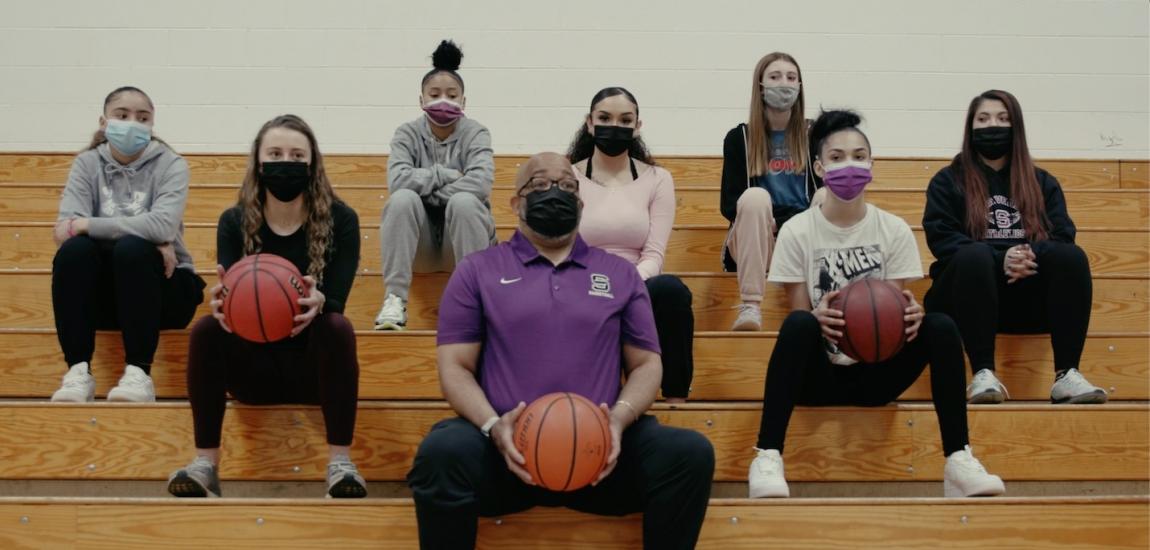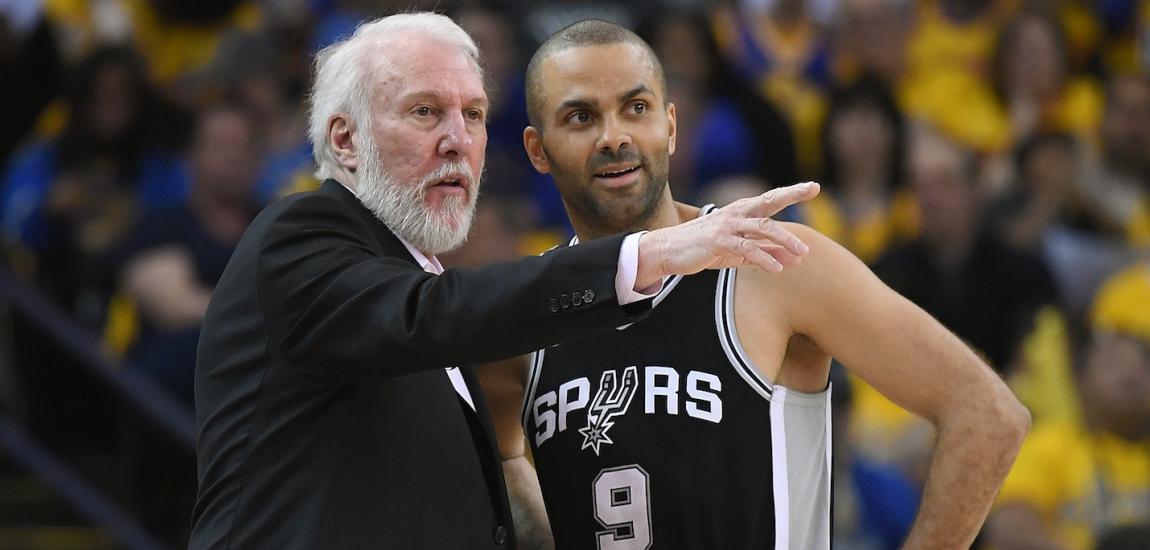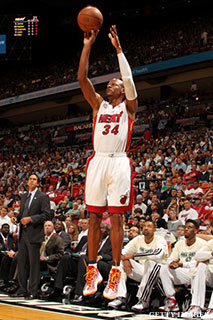
How do you make the best basketball player on the planet appear ordinary? Have him shoot jumpers next to Ray Allen.
It's been one week since the Heat's 27-game win streak ended, and the team is getting in a quick practice before flying to Charlotte for its next game. Miami has clinched the top record in the Eastern Conference, giving it the No. 1 seed and home court advantage in the playoffs. The guys are loose. The pressure is off. Everyone's having fun.
On the far end of the practice facility, LeBron James is paired with Allen for some shooting drills. This is where the three-time NBA MVP, the reigning Finals MVP and the two-time Olympic gold medalist looks almost pedestrian. Because for all his gifts and all his talent and all the triple-doubles and all the titles James may win, there's one thing in basketball he'll never be: A better three-point shooter than Ray Allen. Sorry, LBJ, that's just the way it is. But don't sweat it; there's no shame in taking a backseat to perfection.
Scorer. Shooter. Pure shooter. Ray Allen.
On the totem pole of labels given to NBA players who have made a name for themselves by racking up points, the above hierarchy has been in place since the year 2000, or roughly the time when Ray Allen started shooting threes at well above a 40 percent clip, including back-to-back seasons over 43 percent.
"As a guard coming into this league, you try to figure out how to have an impact on the game," Allen says after practice. "When I first got into the NBA, I was paired with two post players who we went to pretty regularly, so I had to space the floor."
The best way to space the floor is to force a defense to recognize that if you're left open from downtown, you're going to hit the shot. If the help defense comes, someone else is open. If it doesn’t? Bucket.
The practice winds down and James and Allen are the only two guys shooting on their hoop. There's one ball between them and as Allen's shots fall, James is momentarily reduced to playing the part of the little brother who stands under the hoop, waiting for one of his big brother''s shots to bounce out so he can have a turn. In the understood world of make-it take-it during shootarounds, Allen is the most lopsided partner imaginable. He almost always makes it, which means you're almost never taking it.

Swish. Rebound. Repeat. This process happens over and over again, each shot a mirror image of the one before it.
"I was a great shooter going into college from high school," Allen says. “I could shoot well and I could score. When I got to college, I just learned more about the fundamentals of shooting and being consistent."
Consistency is the bedrock of being a great long-range shooter; it shows up on the court, in your physical shot, and on the stat sheet, with the results. Allen's season-by-season shooting totals and percentages are a study in repeat performances. He's had 11 straight seasons of hitting more than 100 threes. In many of those seasons, he either approached or topped 200. In 2006, during what could be considered his magnum opus year on production from behind the arc, he hit 269 threes on 653 attempts (41 percent). He also shot 90 percent from the foul line that year.
Milwaukee. Seattle. Boston. Miami. The address doesn't matter. Put Ray Allen 23 feet and 9 inches from the basket in any arena under any conditions and he’ll still be the most efficient three-point assassin in the league.
"Being a great three-point shooter wasn't something that I set out to do," Allen says. "Over time in the NBA, especially early in my career, I've had shooting coaches who philosophized about how to shoot that A-type shot every time. There are lots of guys who can shoot a 'C' shot in this league and they can get pretty good at it. But if you can shoot your ‘A' shot every time, that's how you become one of the best."
Your A-level shot is the perfect version of your shot, where every single component is performed flawlessly. The key, Allen says, is to consistently shoot your best shot over and over again, so that at the end of the day, you can play 40 minutes of basketball a night and your shot never falls off, with your last jumper looking exactly like your first.

This is accomplished through elite conditioning and a level of repetition you can hardly quantify. In Malcolm Gladwell's New York Times bestselling book, Outliers, he writes about a theory originated by K. Anders Ericsson called the "10,000 Hour-Rule," which essentially says that to become world class in something, you need to dedicate 10,000 hours of practice to it. But what if you're beyond world class and are, without question, the best in the world?
Ray Allen has drained more than 2,800 three pointers in his career. He's hit 300 more than Reggie Miller, who ranks second, and almost 1,000 more than Jason Kidd, who ranks third. He's also the only man in the top five who has hit better than 40 percent for his career.
If you apply the 10,000-hour rule to Allen, how many practice three-pointers does that translate to? One million? Ten million?
"The conditioning combined with the repetition is the only way to make sure that your body holds up over the course of the game and that you can perform every part of your 'A' shot,” he says.
The two main components of the A-shot that Allen talks about include the lift and the release point. The lift is the height a shooter gets off the ground and the release point is the height and moment of the jump that a shooter flicks the ball to the rim. When you combine the ideal lift and release point that gives a shooter the best chance for his shot to go in, you've discovered his A-level shot.
Hand position, head position, a locked elbow position, foot placement and follow through all play important roles as well, but they can be different for every player. The reason Allen’s shot is considered textbook is because his shot includes the ideal form for all of those moving parts and it is exactly the same every time he shoots, as if each shot is coming off an assembly line as a carbon copy of the one before it.

"You never walk into the gym and start shooting your C-level shot," Allen says. "You walk on and shoot your best shot, your A-shot, every time you step on the floor. That 'A' level shot is the one that you'll need. That's the one that you may shoot in the fourth quarter when the game is on the line and you have to get it over a seven-foot tall defender. You don't want to have to change anything up. You can't just practice a mediocre shot and then walk on the floor and expect to have your best."
The 'C' shot Allen is talking about is basically a sloppy version of your best shot. Maybe you're not jumping high enough. Maybe you're letting the ball go late. Maybe your ball rotation is off -- maybe all of the above. When that happens, you need a correcting mechanism.
"If things are off, I'll go shoot free throws," Allen says. "If the ball is short, you have no lift. If your timing is off, then you have to shoot free throws to get it back. Sometimes, you're just off."

A few years ago Sports Illustrated polled 146 NBA players and asked them who they thought the best pure shooter in the league was. Ray Allen came in at No. 1, even though he says that he wasn't born with a perfect stroke. Like Tiger Woods tinkering with his golf swing or Justin Verlander honing his pitching delivery, Allen has spent more than half his lifetime mastering his shot.
"I've developed my shot by paying attention to everything I'm doing," he says. "I watch film and see the lift that I have on my shot and I make sure that I'm true to that lift. It's hard to jump every shot, but I choose to. Some people have ridiculed me in the past and said, well, 'You can't take a shot without jumping.' And I say, well, I could, but what that does is it decreases my chances of making a shot. I can make lots of shots not jumping, but when the shots count, I want to be consistent and try to keep it the same all the time."
The main benefit of keeping things the same all the time is that you become immune to pressure. In fact, you almost become immune to thinking about your shot at all.
"A lot of times I'm amazed because it feels like I didn't even jump and I'm up off the ground at a pretty high level," Allen says. "It feels like I just flicked it. That's just from the repetition of shooting all the time. And that's kind of what you want. You want to not blink when you take a big shot."
When Allen is asked specifically about performing in clutch situations, he falls back onto his practice philosophy of being consistent. He defines the ability to be clutch as being able to perform your everyday routine activity that you do on a daily basis under extreme situations.

"If there's two seconds left on the clock or we're down one or two, it doesn't matter to me because I'm taking the exact same shot I normally do," Allen explains.
While Celtics fans may have their favorite Allen buzzer beater (the three to beat the Knicks in Game 1 of the 2011 playoffs, the dagger over Joakim Noah to beat the Bulls in 2009) and ex-Sonics fans may have their favorite (the near 40-foot bomb in double OT to beat Phoenix in 2006), the man himself doesn't have one big three that stands out.
"I don't think there is one in particular for me," he says. "If you look up at any shot that I've hit at the buzzer, I can superimpose my body and put that on any floor, home or on the road, against any opponent and it's all the same look. That's why I've always been the type that I don't get overexcited at the end of games because I do it so much there's no pressure."
All the pressure, then, is on the defense to stop him -- which is exactly how Allen wants it.
-- Jon Finkel is the author of The Dadvantage: Stay In Shape On No Sleep With No Time And No Equipment. Follow him on Twitter @Jon_Finkel.

